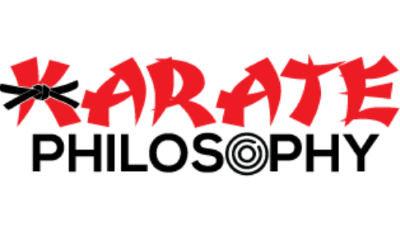Motobu Choki (1870–1944) was probably the only karate master who openly tested his skills and proved that his karate style was effective in actual combat.
Many believe that his no-nonsense street-fight style of karate is the very essence of karate, it is how karate should be: practical, effective, and deadly.
Unfortunately, there are not a lot of written records about him and his style.
Despite becoming very popular in Japan following his victory over a much younger and bigger Western boxer, Motobu did not establish his own style like other karate masters because he always considered himself a student of karate.
He had a very modest following which was nowhere near the levels that other contemporary karate masters like Funakoshi Gichin, Mabuni Kenwa, Miyagi Chojun, and Otsuka Hironori had.
Luckily, he left us two books on karate that give us a glimpse of his training, principles, and philosophy.
Motobu Choki published two books “Okinawa Kenpo Karate Jutsu Kumite Hen” in 1926 and “My Art of Karate Jutsu” in 1932.
According to Nakama Chōzō, a student of Motobu Choki, there was also an unpublished manuscript that Motobu had sold to pay for his hospital bills which had been lost.
“Okinawa Kenpo Karate Jutsu Kumite Hen”
“Okinawa Kenpō Karate Jutsu Kumite Hen” (Compilation of Okinawan Kenpo Karate-jutsu Kumite) was published in May 1926.
This book was published after Motobu Choki famously defeated a boxer in a challenge match and became well known in Japan. This is, perhaps, Motobu Choki’s attempt in helping spread karate in Japan.
The book includes the 12 kumite drills that Motobu Choki had developed, accompanied by demonstration photos. It also has brief information on karate history, posture, kempo rules, how to make and use the makiwara, and treatments for injuries.
Motobu Choki’s kumite drills are all practical close-quarter fighting techniques.
With its single focus on kumite, Motobu’s book is a stark contrast to Funakoshi’s first book on karate “To-Te Jitsu” published in 1922 which heavily focuses on kata and details Funakoshi’s opposition to sparring.
“My Art of Karate Jutsu”
“My Art of Karate Jutsu” was published in 1932. This second book is an extension of the first book and there is a lot of overlap between the two books.
The majority of the book is devoted to Naihanchi Shodan kata (with step-by-step instructions) and kumite techniques he developed. There are photos of him demonstrating Naihanchi kata and kumite techniques.
However, the book also includes other valuation information that gives us a glimpse of his training and principles.
In particular, it details how to clench a fist and one-knuckle fist, the importance of coupled hands, how to use the makiwara, his view on the most practical stance in fighting, some training principles, and brief information on karate masters and karate history.
Two translations of this book by Andreas Quast and Motobu Naoki and Patrick and Yuriko McCarthy have been published.
If you are interested in this book, please check out my review of this book (translated by Andreas Quast and Motobu Naoki). I will definitely do a review of his first book in the near future.
Motobu Choki’s Lost Manuscript
Nakama Chōzō (1899–1982) studied under Motobu Choki for a period of time said in an interview in 1978 with Sabana Seijin that Motobu Choki had written a four-volume book on karate that was never published.
Motobu was challenged by the fact that nothing had ever been written on how to use karate in a practical way. Hence, he set out to publish such a book.
After composing a four-volume manuscript, which detailed kata and application theories along with the history of karate in Okinawa, Motobu sensei left it with Mr. Nakama for safe keeping. During that time, Mr. Nakama made a copy of the manuscript for his own private study.
By the time the master finally sent for the document, Nakama thought it was because he was going to publish the work. He was shocked to learn that Motobu Sensei had taken ill and was hospitalized. Without the means of paying his bill, Motobu sensei sold the manuscript privately in order to settle his account.
Tragically, the copy that Nakama had made was later destroyed during the bombing of Tokyo in 1945. To this date, the source of what might have been an unprecedented study of karate remains unknown and the subject of intense curiosity.
It is regrettable that we don’t know what happened to his last manuscript which is likely to be a lot more comprehensive than the two published books.
Other posts you might be interested in:
Motobu Choki’s Wisdom in “My Art and Skill of Karate”
Motobu Choki’s Karate Principles Through Quotes
Motobu Choki’s Fight with a Boxer that Brought Him Fame
Yoshimi Inoue: The Life of a Legendary Karate Instructor
Valuable Karate Lessons from Yoshimi Inoue (Part 1)
Valuable Karate Lessons from Yoshimi Inoue (Part 2)
References
“My Art and Skill of Karate” by Motobu Choki (1932), translated by Andreas Quast and Motobu Naoki
“Karate – My Art” By Motobu Choki, translated by Patrick and Yuriko McCarthy

